Hi everyone !
In our 2017 Objectives Setting blogpost, we planned to execute three financial literacy lessons for the kids. My son and my girlfriend’s son are 12 and 13. My daughter is eight. You can’t start early enough with teaching kids how to deal with money. Recently I read a column of Bakelants & Paepen where it was stated that teenagers in a school in Evergem (Belgium) did decide not to chose Financial literacy as an education lecture during the year. I wonder what they did pick instead… Well, I am not going to wait until the school does educate my kids. That is too late according to me ! I can only say…parents roll up your sleeves and educate your kids !
In below roadmap, you clearly see how you as parents can help children in their education to financial literacy. For 10-12 years old, as a parent you can open a bank account and allow your child to do transactions. The kid’s milestone is to learn the value of money and carry out financial transactions. For 13-15 year old kids, they need to learn budgetting and how to make a ledger of income and outgoing expenses.
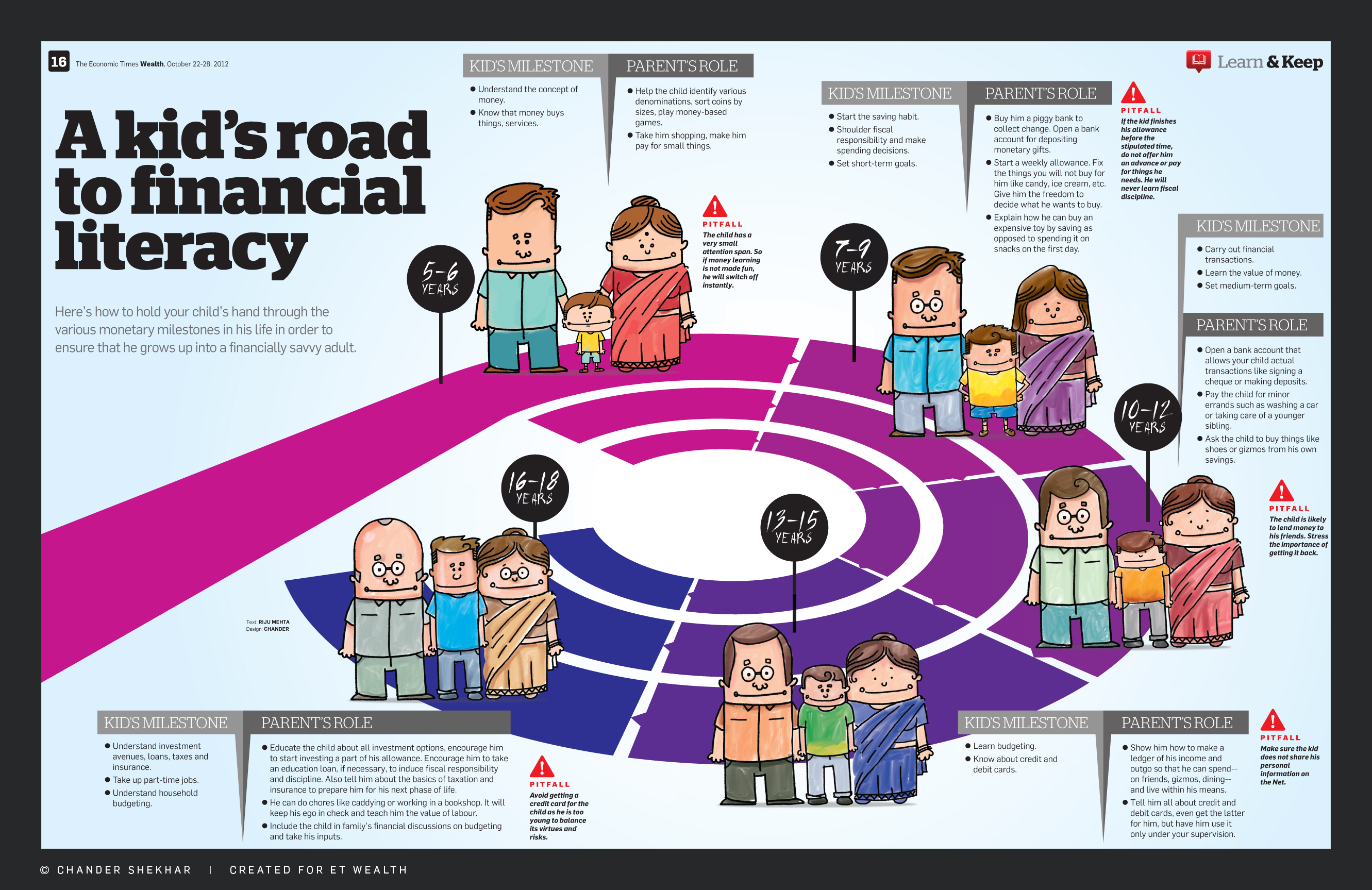
As the two oldest kids will be 13 by the end of the year, the first financial education topic that I created was Budg€t Fun. Knowing where your money was spend instead of asking yourself where did it go? is important and can be achieved with a budget. A budget is the MOST IMPORTANT way to manage money in an excellent way. You can find the link to our first class on the following link
Kids Financial Education Lesson 1 : Budg€t Fun
At the end of August, we executed our SECOND financial education class with the kids.
You can download the materials in English and in Dutch at the end of this article if you want to do this yourself with your kids. Have fun! We only ask you to make some publicity for our blog within your family and/or friends. And please send us also the pictures when you do this exercise and subscribe to our newsletter (below the search on our Blog page) which summarizes our interesting blog posts per month. It would make us very happy ! Thanks in advance. Here we go…
Start of the Financial literacy class
Start of the Powerpoint presentation. Slide 2. I explained to the kids that the morning will be spend with an educational game about money. In order to know how to manage money, they learned in our first class how to budget and use money. Many people don’t get any financial education and they have to figure it out themselves with bad consequences as a result. It is important in life to get financial education. Before going forward, I want to know what did the kids remember of this FIRST financial education ?
Kids jotted down :
- Save as much as possible
- Don’t waste your money buying lot’s of stuff
- Compare prices in the shops
- Maximize your income
Well, I was very pleased to read this ! Kids did learn from my first financial class.

Slide 3. Compound interest – Albert Einstein
In life you should always pursue your dreams. First be happy with what you have but aim for more… Money is simply a tool that can work for you. You only need to learn how to use it wisely and put it at work for you! The morning will be spend on “learning about the principle of compound interest” – Did Albert Einstein say this? Who knows? I just tell the kids that this is the most important financial concept they should understand and apply very well.
slide 4. The compound interest principle is the most important principle for growing your money
Task 1 : Calculate compound interest in Year 5 and give me total amount in Year 5
By using slide 5 & 6 I explain to the kids the principle of compound interest. Each year 9% on the total amount gives you a new interest total which accumulates over time to a new total. It is difficult for the kids to understand at first. I ask them to write the process of the calculation down.
At the end of the exercise we watch a youtube movie.
Task 2 : Doing some math
Now it’s time to write down everything to make sure you understand the principle of compound interest. I give each kid 10.000 euro (monopoly money) and they get 7% during those 10 years.
I explain also that today on a savings account the interest rate is only 0,11%…horrible !
The task is to calculate how much money do they have in year 10. This exercise takes time but by applying the same calculation over and over again, kids learn by repetition.
We repeat the same exercise but this time with an interest rate of 15%. You might say that those growth rates are not realistic but the aim is to learn the impact between a high and low growth rate.
Task 3 : Can you grow your money to 1 million $ or Euro?
I ask the kids if they can grow their money to 1 million euro. They wonder…staring faces and smiles. I want to test the mindset and their thinking…what would they do with 1 million ?
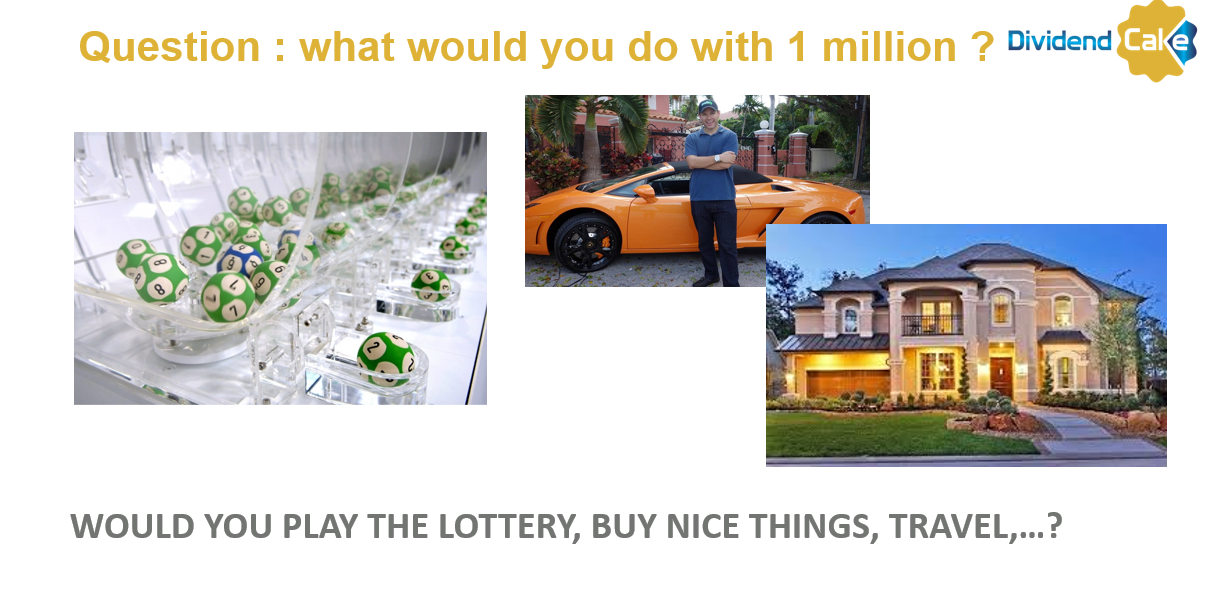
Would they play the lottery to win big money? Would they buy a Ferrari or a big house? I give the kids a few minutes to think about this…
One child would buy a luxury car and a big house with 1 million $, another kid would just save the money and don’t buy anything. A great difference in mindset….clearly !
Slide 12 – I explain to the kids that playing the lottery is equal to losing your money. It is for stupid people who don’t understand anything of math and want to pay extra taxes.
Slide 13 – I explain to the kids that buying a luxury car and a big house is nice but do these “things” give you money? THINK !! The bottom line is that they ONLY cost money (mainteance costs). In future classes I will explain the different asset classes….
Task 4 : Learn about financial behavior of 4 different persons
Here I explain to the kids how money grows for 4 different people. They all start with 10.000 Euro. Chloe saves 10.000 each year. Quincy only the first 10 years. Lyla starts only from age of 35. Noah puts it on a savings account. Can you see how money grows over time?

Here I ask the kids the questions :
- Who has the most money at age of 65? Who has the least amount of money? Why?
- What is the difference between Lyla and Quincy?
- Who is the dumbest?
- What can you learn from this ?
Kids learn that putting money on a low interest rate account is NOT a good solution. The key principles of compound interest are listed in slide 15. What is important is your annual rate of return, time and your additions each year.
Task 5 : How quickly can you reach 1 million ?
Slide 16. I explain to the kids that following table is an accumulation of money growth over 25 years. How quickly you reach 1 million depends on two elements: How much you save and add and how much annual rate of return you reach each year !
So I ask a couple of questions such as :
- I am 25 years old and I want 1 million when I am 50. I only want 6% return..how much do I need to save each month?
- What is the highest annual rate of return with the lowest investment?
- What is the lowest growth rate and highest savings amount needed?
- ….
You can invent some extra questions yourself. ..
Slide 17 – Here I ask what is needed to grow your money and be successful…read the bottom line
Slide 18 – The compound interest principle can be applied to three layers of your financial pyramid ! Grow your money quicker by focussing on your growth rate, time and yearly additions to your portfolio.
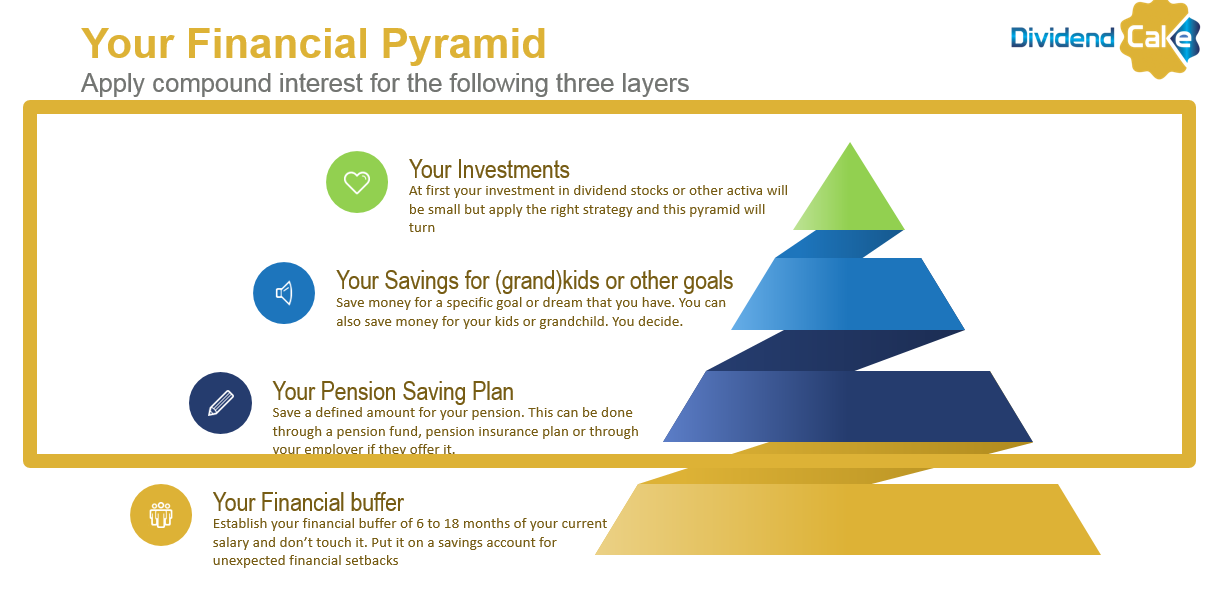
Final conclusion and key learnings of the day
To conclude the day, we asked the kids to list out their key learnings of this financial education. Here are the key learnings that the kids wrote down :
- We learned that we need to focus on the growth rate of our money
- We learned how to grow money over time
- We learned that we should NOT invest in things that doesn’t give us money but only cost us money
- We learned that we should add money each year so our money grows quicker
We gave the kids a reward (a chocolate bar of 1 million dollar) for their great enthusiasm and contribution. We told them that many parents do not take the time or effort to give their children financial education. How will they ever manage money in the future?
We end with two quotes of Warren Buffett. To my surprise kids know who he is…We discuss the two quotes and to my great satisfaction the kids understand the importance of the quotes.

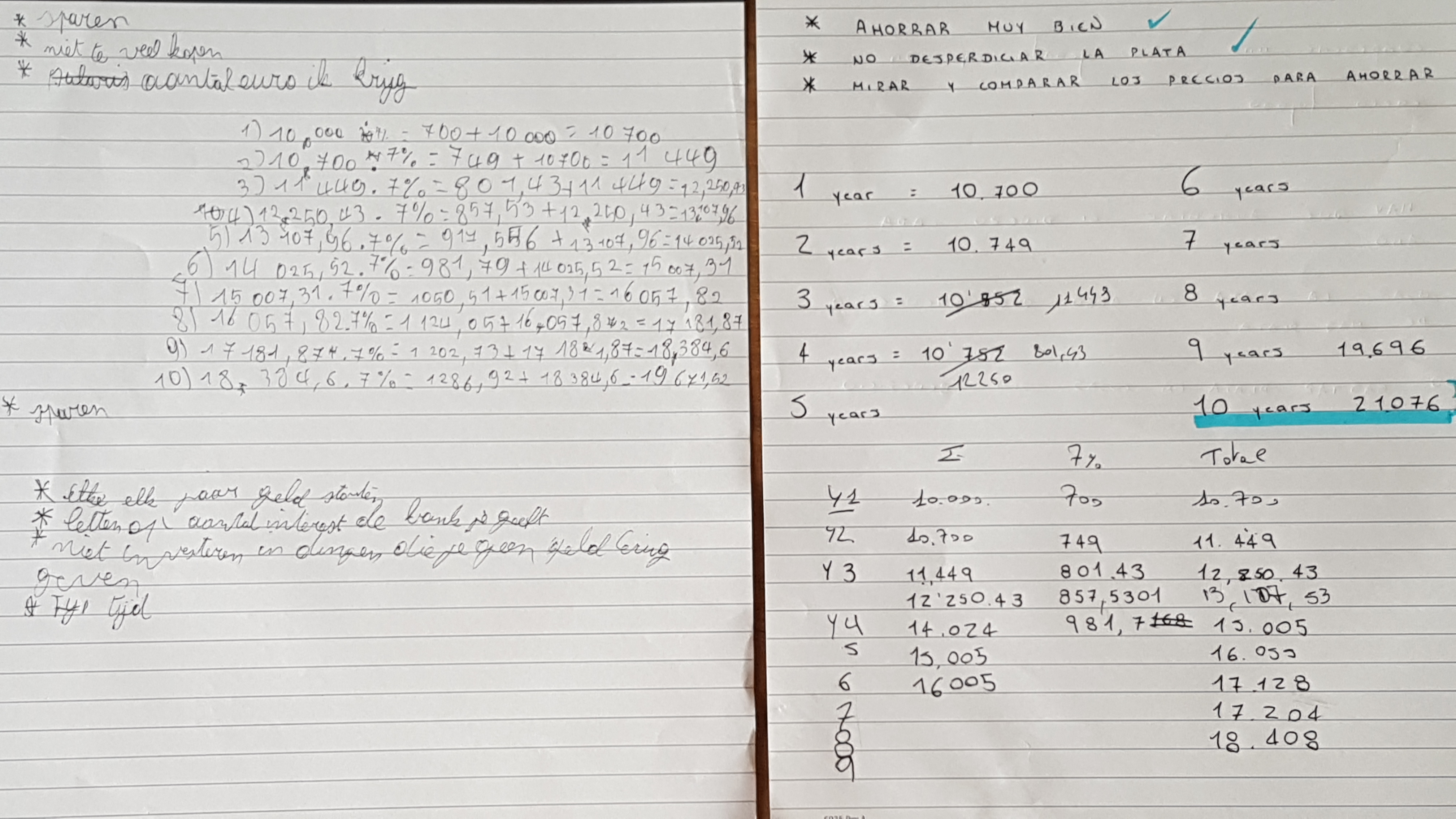
Education is key to be successful in life and this also applies to financial education and knowledge. Did you know that 46% of teens do not know how to create a budget…how many would know the principle of compound interest? Did you educate your child some financial literacy? Many family members have teenager kids and I wonder how many of them would know the principle of compound interest…leave your comments and feedback. Do the test at home…
Download our materials below. Keep on following us on Twitter and Facebook where we share more blog posts and other articles. Share THIS blog post on your timeline in Facebook so you help make other parents aware of the need for financial education to their kids. Even grand parents can do this with their teenager grand kids…why not?
Stay tuned for our next blog post !
Appendix
Below you can find the documents we used during our financial education.
English
DividendCake_Kids Financial education Class 2
Dutch
DividendCake_Kids Financial education Class 2 – Dutch
We end as always with a quote that applies to the above blog post
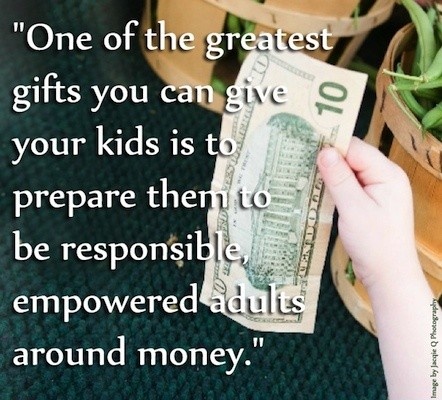

6 Response Comments
I think the Einstein quote is that compound interest is the most powerful force in the universe 🙂 Anyways, I think it’s admirable how you are teaching the kids about financial literacy, and will certainly give them a leg up in life.
Thank you !
You are doing a good Job. My favorite topic has been Compound Interest which i regret that I have learned very late in life. These students will always remember you.
Thanks…and those students are our kids 🙂 I hope many parents use our lessons to teach their kids too.
Great job! Keep up the good work!
Thanks !